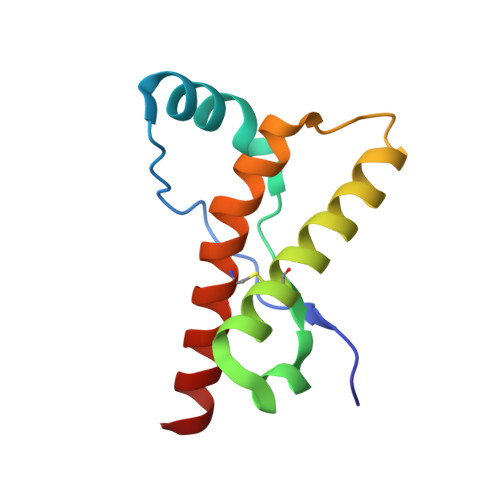Conformational diversity in prion protein variants influences intermolecular beta-sheet formation.
Lee, S., Antony, L., Hartmann, R., Knaus, K.J., Surewicz, K., Surewicz, W.K., Yee, V.C.(2010) EMBO J 29: 251-262
- PubMed: 19927125
- DOI: https://doi.org/10.1038/emboj.2009.333
- Primary Citation of Related Structures:
3HAF, 3HAK, 3HEQ, 3HER, 3HES, 3HJ5, 3HJX - PubMed Abstract:
A conformational transition of normal cellular prion protein (PrP(C)) to its pathogenic form (PrP(Sc)) is believed to be a central event in the transmission of the devastating neurological diseases known as spongiform encephalopathies. The common methionine/valine polymorphism at residue 129 in the PrP influences disease susceptibility and phenotype. We report here seven crystal structures of human PrP variants: three of wild-type (WT) PrP containing V129, and four of the familial variants D178N and F198S, containing either M129 or V129. Comparison of these structures with each other and with previously published WT PrP structures containing M129 revealed that only WT PrPs were found to crystallize as domain-swapped dimers or closed monomers; the four mutant PrPs crystallized as non-swapped dimers. Three of the four mutant PrPs aligned to form intermolecular beta-sheets. Several regions of structural variability were identified, and analysis of their conformations provides an explanation for the structural features, which can influence the formation and conformation of intermolecular beta-sheets involving the M/V129 polymorphic residue.
Organizational Affiliation:
Department of Biochemistry, Case Western Reserve University, Cleveland, OH 44106, USA.














